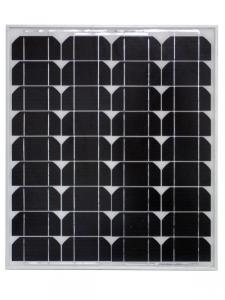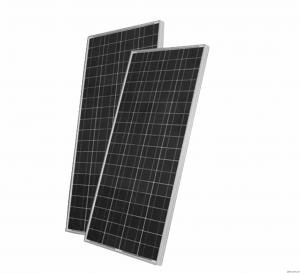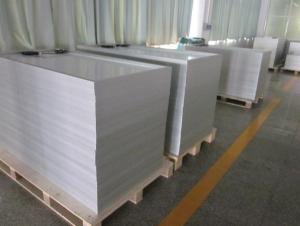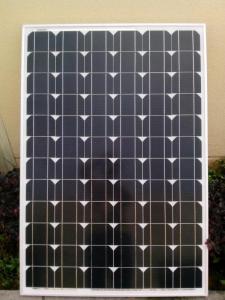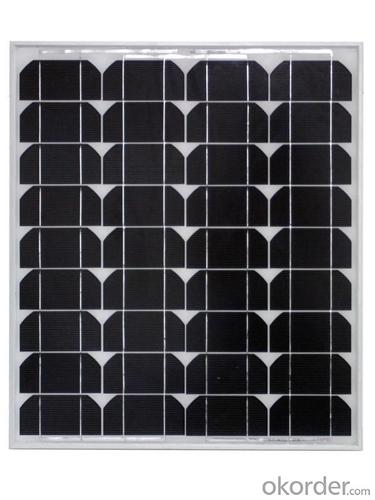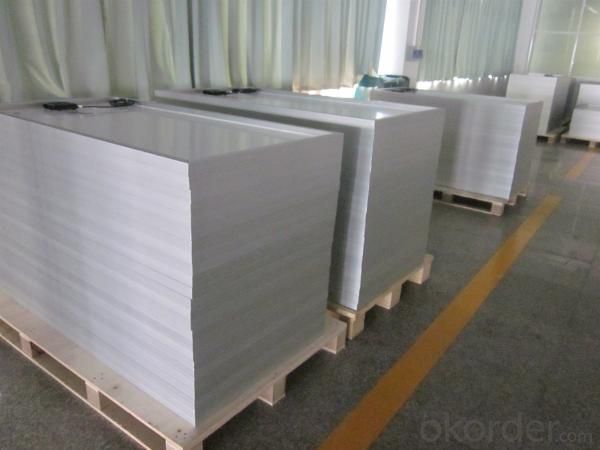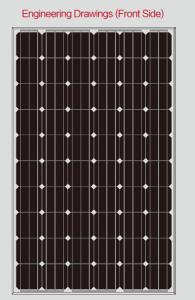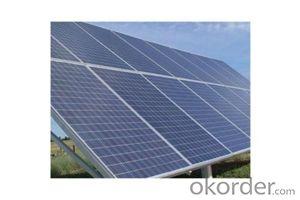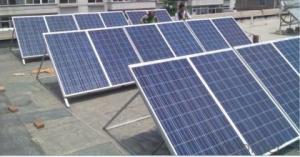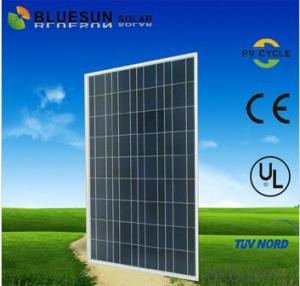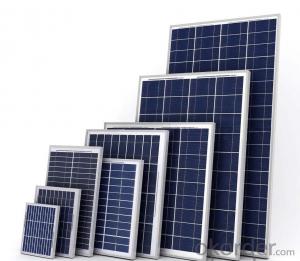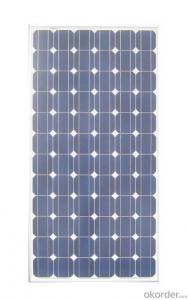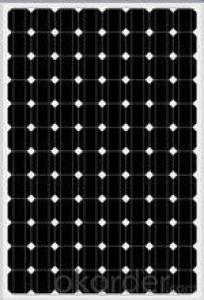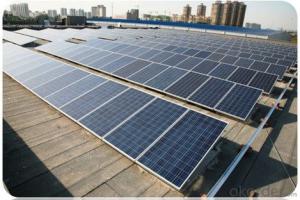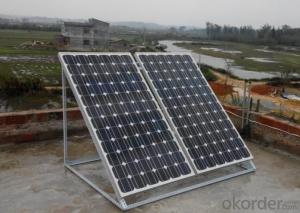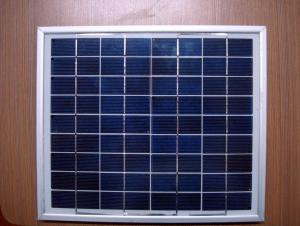Best Portable Monocrystalline Silicon Solar Panels for RV
- Loading Port:
- Shanghai
- Payment Terms:
- TT
- Min Order Qty:
- 100 watt
- Supply Capability:
- 100000 watt/month
OKorder Service Pledge
OKorder Financial Service
You Might Also Like
Introductions of Monocrystalline Silicon Solar Panel
CNBM Solar photovoltaic (PV) Panel is designed for large electrical power requirements.
It is the optimal choice for both on-grid and off-grid power systems.
CNBM Solar panel offers high performance of power per square foot of solar array.
Monocrystalline silicon(c-Si): often made using the Czochralski process.
Single-crystal wafer cells tend to be expensive, and because they are cut from cylindrical ingots, do not completely cover a square solar cell module without a substantial waste of refined silicon.
Hence most c-Si panels have uncovered gaps at the four corners of the cells.
Characteristics of Monocrystalline Silicon Solar Panel
I Solar Cell : High efficiency crystalline solar cell. Even if under the weak light, the solar module can produce maximum power output.
II Tempered glass (toughened glass): Anti-reflecting coating and high transmission rate glass increase the power output and mechanical strength of solar module.
III EVA and TPT: Using high quality EVA and TPT to prevent destroying and water.
IV AI frame: Without screw, corner connection. 6 holes on the frame can be installed easily.
V Junction box: Multi function junction box with water proof.
VI Long lifetime: ≥25 years; Less power decrease.
VII Good performance of preventing from atrocious weather such as wind and hails.
Advantages of Monocrystalline Silicon Solar Panel
Characteristics of CNBM Solar Monocrystalline Series (45W-65W)
Max Power Voltage Vmp (V) | 17.8V | 18.0V | 17.6V | 17.8V | 18.0V |
Max Power Current Imp (A) | 2.53A | 2.78A | 3.13A | 3.37A | 3.61A |
Open Circuit Voltage Voc (V) | 22.4V | 22.6V | 22.2V | 22.4V | 22.6V |
Short Circuit Current Isc (A) | 2.74A | 2.97A | 3.35A | 3.61A | 4.36A |
Max Power Pm (W) | 45W | 50W | 55W | 60W | 65W |
Temperature Coefficient of Cells of CNBM Solar Monocrystalline Series (45W-65W)
NOCT | 47℃±2℃ |
Temperature Coefficients of Isc (%/℃) | 0.064 |
Temperature Coefficients of Voc (%/℃) | -0.33 |
Temperature Coefficients of Pmp (%/℃) | -0.45 |
Mechanical Data of CNBM Solar Monocrystalline Series (45W-65W)
Power | 45W/50W | 55W/60W/65W |
Dimension | 630×550×30mm | 820×550×30mm |
Weight | 4.5kg | 5.5kg |
Tolerance | ±3% | ±3% |
The dimension of the modules can be changed according to the demand of clients
Limits of CNBM Solar Monocrystalline Series (45W-65W)
Operating Temperature | –40 °C to +85°C |
Storage Temperature | –40 °C to +85°C |
Max System Voltage | 700V |
Guarantee of CNBM Solar Monocrystalline Series (45W-65W)
Products Guarantee | 2 yrs free from defects in materials and workmanship |
Performance Guarantee | No less than 90% within 10yrs and no less than 80% within 20yrs |
Certificates | IEC, ISO, TUV, CE |
Household Application
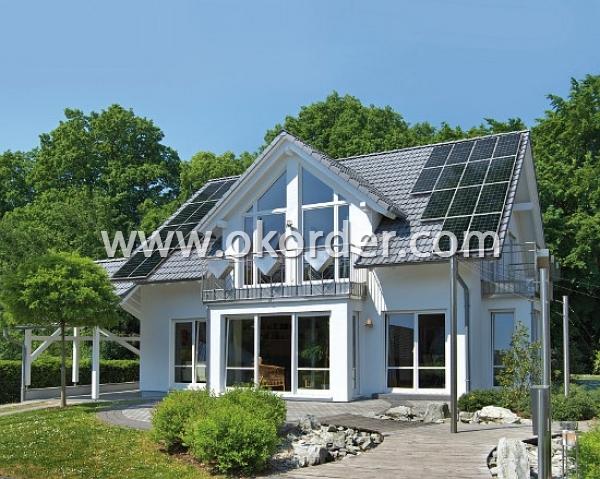
- Q: How can I determine the size of solar panel system I need?
- To determine the size of solar panel system you need, you should consider factors such as your average monthly electricity usage, the amount of sunlight your location receives, and the available space for installation. Consulting with a solar energy professional or using online solar calculators can also help in determining the ideal system size based on your specific requirements and goals.
- Q: Can solar panels be damaged by birds or other animals?
- Yes, solar panels can be damaged by birds or other animals. Birds may create nests under solar panels, which can cause damage to the wiring or block sunlight. Additionally, animals like squirrels or rodents can chew on the wires, potentially causing electrical issues. It is recommended to take preventive measures, such as installing barriers, to protect solar panels from such damage.
- Q: If a solar panel has a power rate of 80 Watts and efficiency of lets say 30%. Does that mean the maximum power this solar panel can generate is (30/00)*80=54 Watts or its just 80 Watts?
- Solar panels are tested in a lab that has a light the produces 000 watt/hrs per square meter. In these conditions your panel will produce 80 watt/hrs. If you would like to know what it does in really world conditions you have to find the sun-hours in your given area. A sun-hour is basically how many watt/hrs hit a square meter in a day. This number changes based on time of year, orientation, and temperature. Here in Fairbanks Alaska if the panel was at 90 degrees facing true south in October (.9 sun-hours) It would produce 80 X .9 X .8 (20% efficiency loss due to wires and controllers) it would produce 273.6 watt/hrs on average each day.
- Q: Can solar panels be used in areas with high levels of hurricanes?
- Yes, solar panels can be used in areas with high levels of hurricanes. However, it is important to ensure that the solar panels are properly installed and secured to withstand the strong winds and potential debris that hurricanes can bring. Additionally, selecting hurricane-resistant solar panels and implementing proper maintenance and inspection procedures can help to mitigate potential damage and ensure their long-term functionality in these areas.
- Q: I am fairly new to the solar panel scene, and am eager to try to set one up myself instead of buying a kit. I am looking for a solar panel that puts out 00 Watts or more, and can produce more than 20 volts. Thanks
- a cheap one that doesn't burn up
- Q: Do solar panels require direct sunlight to generate electricity?
- Yes, solar panels do require direct sunlight to generate electricity. While they can still produce some electricity in indirect or diffused sunlight, their efficiency significantly decreases without direct sunlight. Direct sunlight provides the optimal conditions for solar panels to convert sunlight into electricity effectively.
- Q: i would like to hook up a power outlet to a solar panelmy light system is 500watts will run for 8 hours/day between noon to 8PM.So what is the most effective system do I need?
- How critical is the power, and is it only lighting? If it's only lighting what the other person suggested about a SunTunnel is the best solution. Not only is it less than /0 the cost, it will be 00x as efficient. If you think about it, it's kind of silly to turn the sun's light into electricity, throwing away 80%+ of the energy in the process, then turn that back into light again, throwing away 95% of that energy in the process. Much better to just use the light directly. Or cut some ordinary skylights or windows. If you are intent on solar electricity, it would be better to install a grid-tied system, and offset the electricity from your building in general, rather than try to build a dedicated outlet for the lights. Call a professional solar installer for a free quote.
- Q: i have a 50 watt 2 Volt solar panel..Will it can switch on directly a car head light on a sunny day??? How much head lights it can support on a bright sunny day??? if its cloudy then can it run a single Head light???? i have no batteries just want to connect a car Head light directly to solar panel.
- Indestructible okorder /
- Q: I got a really great deal on 2 houses because they were fixer-uppers. I'm living in one and the other I'm renting out. However, the previous owner did everything himself in 950 95, so needless to say, things are not to todays standards. Both houses need rewiring (there are no ceiling lights, few outlets, and mine has two old fuse boxes and the other has a breaker box but it pops the breaker a lot). The only reason they are still functional is because both houses use natural gas for water and heat, so otherwise, they electrical work is getting us by, but who knows for how long. I thought that maybe instead of redoing the electric, that I could just add solar panels to compensate for the small electric boxes. Also, since I would have to hire electricians to do all the work, which would be more cost effective (not including the decrease in utilities since I don't pay the utilities in the rental anyways)?
- If there is already electricity on the street, you won't save anything up-front by adding solar. In fact, it will cost a lot more. You'd still have to have them wired up to code, plus have inverters and maybe a kit to sell power back to the utility. It may pay for itself in 20 years if the price of electricity rises. Otherwise, solar makes sense if you are miles from town and the utility wants $00,000 to run a power line to your house. (My figures are total guesswork - check with a local solar installer or two)
- Q: Can solar panels be installed on a shaded roof?
- Yes, solar panels can be installed on a shaded roof, but their efficiency may be significantly reduced. The amount of shade and its duration throughout the day will determine the impact on energy production. It is recommended to assess the roof's shading factors and consult with a solar panel installer to determine the feasibility and potential output of a shaded installation.
Send your message to us
Best Portable Monocrystalline Silicon Solar Panels for RV
- Loading Port:
- Shanghai
- Payment Terms:
- TT
- Min Order Qty:
- 100 watt
- Supply Capability:
- 100000 watt/month
OKorder Service Pledge
OKorder Financial Service
Similar products
Hot products
Hot Searches
Related keywords
